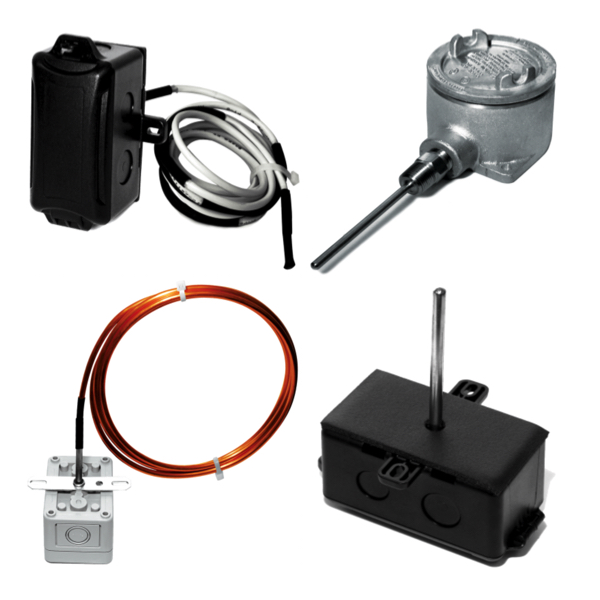Thermistors

There are a broad array of applications for which precise temperature measurement and control is required—thermistors are used in all of them. And when it's a resistive device, thermistors are deployed. In terms of temperature coefficient, there are two predominant types of thermistors: NTC (negative temperature coefficient) and PTC (positive temperature coefficient). Devices that serve to gauge temperature are predominantly NTC thermistors, as they provide the most accurate means of sensing an increase in temperature. Conversely, PTC thermistors find good use in applications that require overcurrent protection and in self-regulating warming devices.
The main benefit of thermistors is their excellent sensitivity to minute temperature changes, which enables them, when so desired, to act as highly accurate and controlled temperature gauges. Among the types of thermistors, NTCs are generally favored for applications requiring a wide temperature span. They can work just fine at sub-zero levels and over decent intervals of hundred-plus-degree Fahrenheit changes. PTCs, on the other hand, are what you want when you’re looking to maintain a constant temperature.
More Information about Thermistors
Thermistors are produced from thermally sensitive substances. Metals or metal oxides and their compounds are the materials most often used for thermistors. Because these materials are semiconductors or behave like semiconductors, they yield a thermistor with a resistance that drops with increasing temperature. Even though the temperature coefficient of resistance (TCR) is high for some thermally sensitive materials, thermistors have the same disadvantages as thermocouples: They are useful only in limited-temperature-range applications and provide only a nonspecific signal.
FAQs
Is an NTC thermistor and a PTC thermistor considered temperature sensors?
Yes, both NTC thermistors and PTC thermistors are considered temperature sensors as they detect temperature changes by varying their electrical resistance in response to temperature fluctuations.
What is the temperature curve and change in resistance of a thermistor?
The temperature curve of a thermistor is typically nonlinear, with a resistance that decreases for negative temperature coefficient (NTC) thermistors or increases for positive temperature coefficient (PTC) thermistors, changing exponentially with temperature variations.
What is a Thermistor?
What is a Thermistor?
Thermistors are thermally sensitive resistors that rely on the change in electrical resistance to measure temperature. As the temperature changes, the resistance changes. The resistance of a specific thermistor will equal a certain temperature based off of the scaling for that device. There are two different styles of thermistor that can be used. The Negative Temperature Coefficient (NTC) and the Positive Temperature Coefficient PTC). NTC thermistor's resistance decreases with the increase in temperature. PTC thermistor's resistance increases when the temperature increases.
What are the advantages and disadvantages of a thermistor compared to an RTD?
Thermistors are less expensive than RTDs and are able to measure temperature changes faster due to their smaller size. They can provide more resolution or better accuracy within the range that they are rated to measure. However, the temperature range is more limited compared to RTDs. Anything higher than 350 degrees Celsius would all but eliminate a thermistor as a good option.

